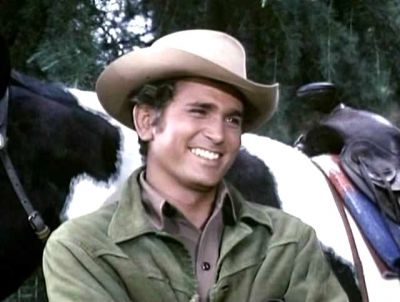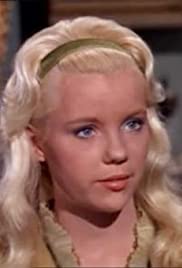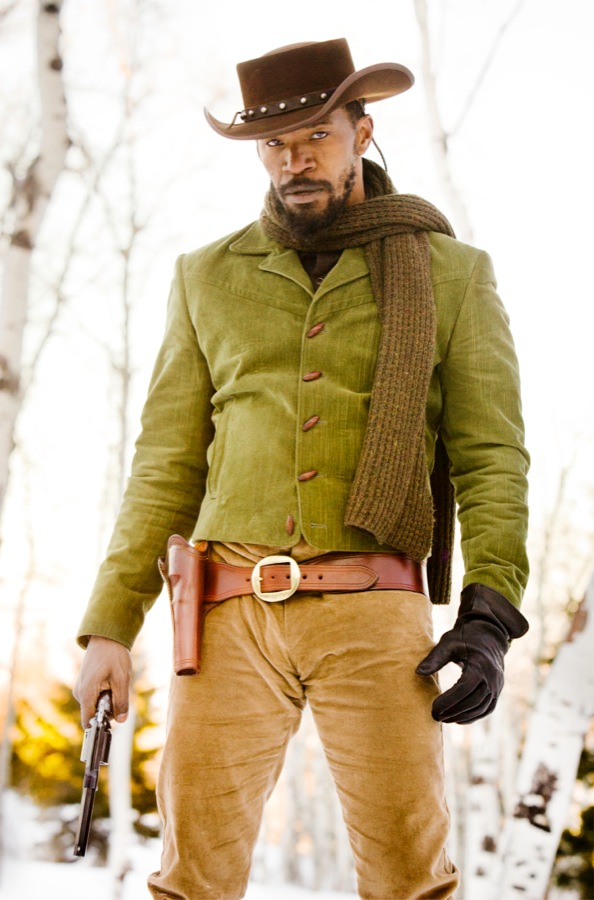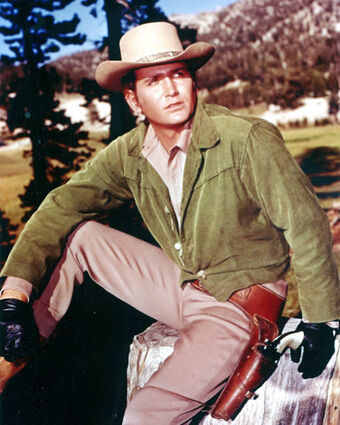Joe Cartwright's Dead Girlfriends: No Wonder Michael Landon Always Cried!
August 6, 2020
You're stubborn and cantankerous, but they just ain't makin' girls into women like that no more. I know, I looked around. - Joe to Carrie Picket, "Different Pines, Same Wind" (aired September 15, 1968)
Welcome back to the #DFGRR, and to our blast from the past: Bonanza. As we covered in the last installment, this little-remembered Western was a colossal hit in the 1950s-1970s. In its 14 years on the air, it racked up almost 360 hours of screentime.
Content warning: This entry discusses sexual violence and intimate partner violence, but does not contain clips of either.
So how many fictional girlfriends died? Let's find out...
The Series
I want people to laugh and cry, not just sit and stare at the TV. - Michael Landon
We've covered most of Bonanza's background in the previous entry. To set the tone of today's discussion, therefore, I'm just going to tell you one more fact: this TV show featured guest appearances by both Jesus and the Easter Bunny.
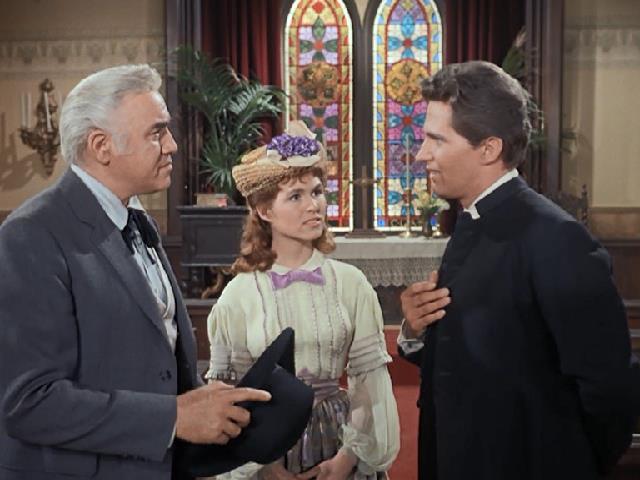 |
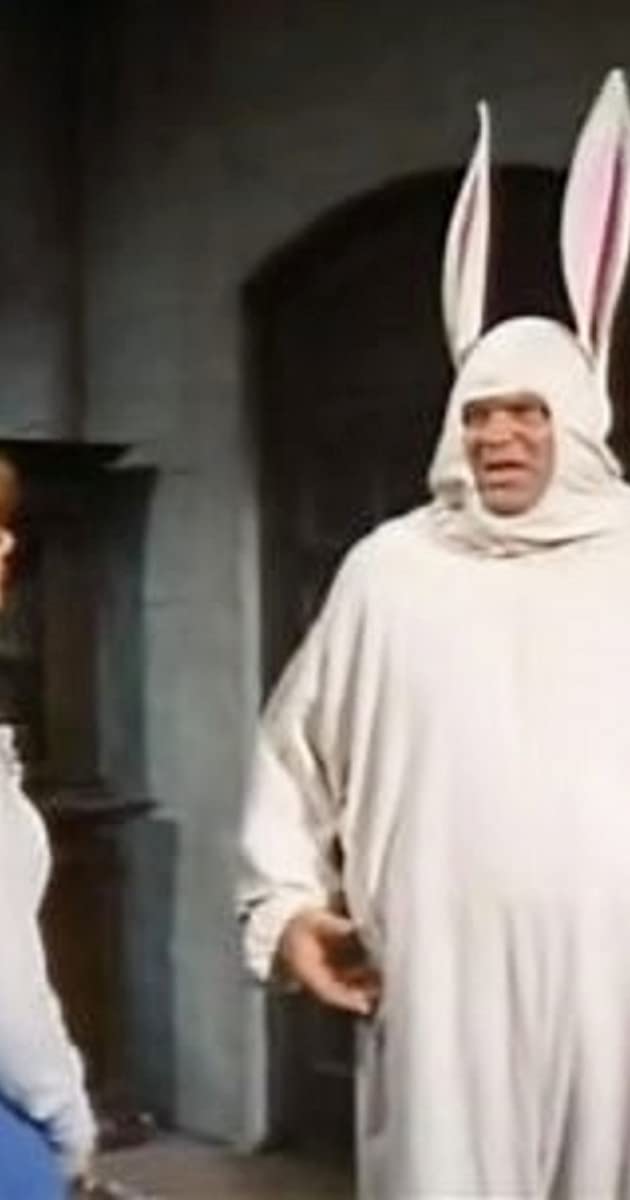 |
|
Exhibit A: Mysterious minister who disappears at the end of "Blessed Are They" (aired 4/22/1962) Exhibit B: The Easter Bunny in "Caution, Easter Bunny Crossing" (aired 3/29/1970) |
|
It is, in short, a pretty funny show, which is also awful to women.
The Character's Qualifications
Joe: Hi, I'm Joe Cartwright.
Meena: Why?
Joe: Why what?
Meena: Why are you telling me?
- A pickup line goes wrong, "Meena" (aired November 16, 1969)
The main characters of Bonanza are four Cartwrights: Ben, Adam, Hoss, and Little Joe. Before we get into Little Joe, the namesake of the Cartwright Curse, I do want to give honorable mention to his father, Ben Cartwright. Prior to the show’s start, Ben Cartwright had already killed three wives.
How did Ben manage to kill 3 wives?
Mrs. Elizabeth Cartwright died giving birth to Adam, Mrs. Inger Cartwright died defending a wagon train from an Indian attack, and Mrs. Marie Cartwright died falling off a horse. Let it never be said that the Bonanza writers disliked cliche. Please do say, however, that Bonanza is already crushing this BINGO game I made.
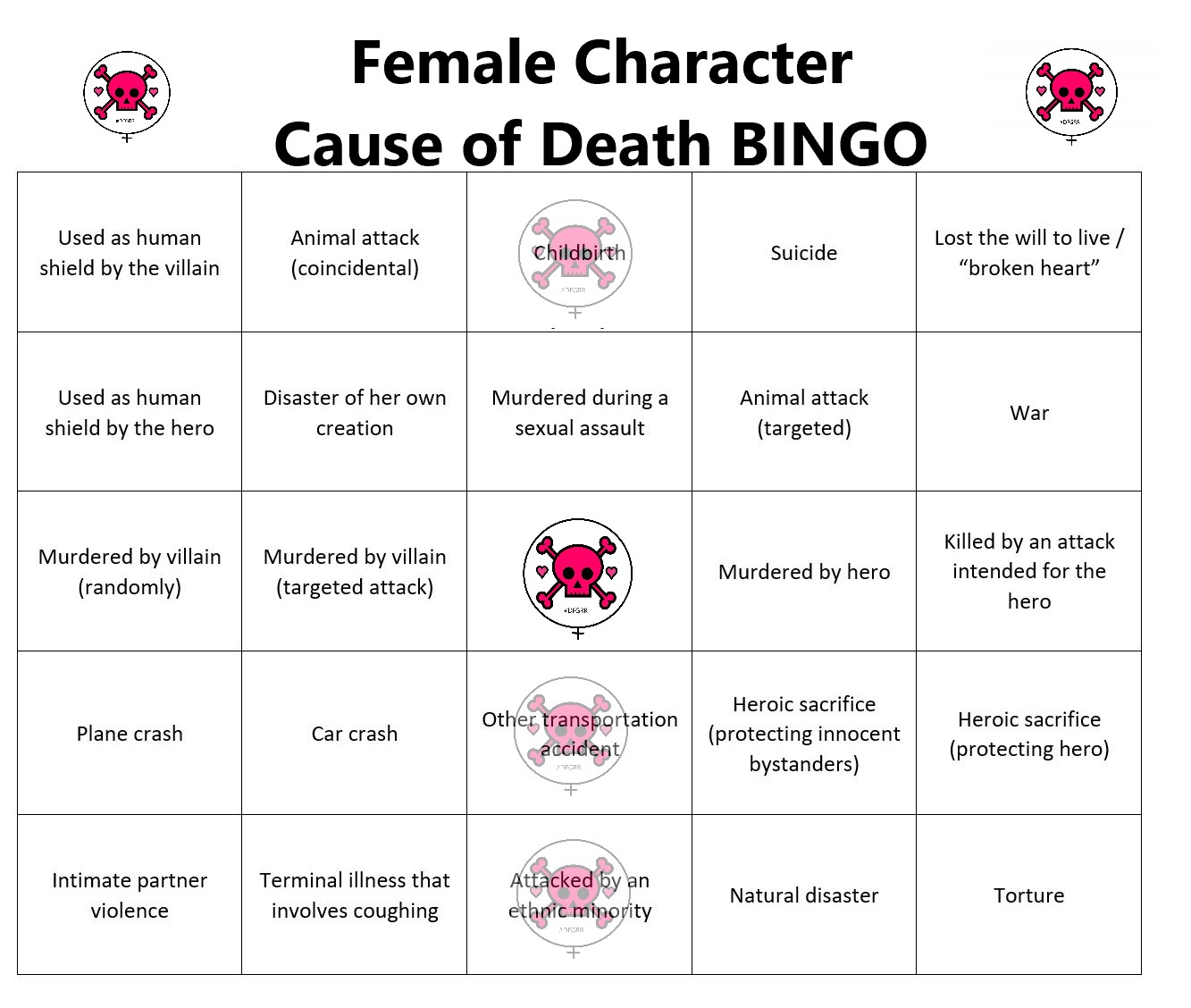
So why is Joe our main contestant, instead of Ben?
First, unlike Adam or Hoss, he stayed on the show from its first episode to its last. Second, unlike Ben, none of his doomed relationships are shown entirely in flashback. Finally, of all of them, he is the biggest Chick Magnet.
"Little brother, I gotta hand it to you - when it comes to women, you're the real expert in the family." - Hoss to Joe, "The Mountain Girl" (aired May 13, 1962)
Joe is a man who very much enjoys the company of women. But he isn't just a skirt-chaser. No, Little Joe is constantly looking for a woman with whom he can fall passionately in love. He's a hopeless romantic with aspirations to be a very good husband and father someday - assuming he can keep a woman alive and with him for that long. So he falls in love, over and over and over again - always, of course, with someone who isn't right for him, or who is about to die. Thanks to all the death and conflict, he only rarely gets to the "marriage" step in his plan.
The in-universe explanation for this revolving door of relationship attempts is that Joe, like his mother, is part Creole - and therefore, a very passionate person. If that sounds like offensive hooey, just put yourself in the mindset of a white TV writer in 1959. Imagine that you've lived your whole life surrounded by the idea that ethnicity determines one's character, which was so mainstream that national immigration policy was based on it. Imagine you've never heard that idea questioned, not even in biology classes. Once you're in that mindset, re-read the first sentence in this paragraph. It's still hooey, but don't you feel better about it?
Out-of-universe, of course, NBC wanted the character to be a sex symbol, and having him settle down would stop them from telling more doomed-love stories.
What attitudes does Little Joe have towards women?
He adores them! They're just so cute, so sweet and defenseless in a harsh world. He'd do anything to protect a lady: fight her boyfriend, fight her brothers, encourage her to go back to her husband, teach her proper manners so she can impress her estranged grandfather enough to be included in his will, convince her father that she's not really a werewolf despite appearances...really, anytime a lady needs help being returned to the care of her closest male relative, Joe is on it. And if she doesn't have men in her life to take care of her, he'll be happy to fill the role.
Please try to suppress your eye-rolling for a few more paragraphs.
Now, Joe's also very willing to help pretty ladies with non-gender-specific tasks, such as learning to read, or learning American Sign Language. Sometimes he even goes into such projects without an ulterior motive. But they almost invariably end in romance, because of how attractive all fictional women find him.
How do real-life women feel about Little Joe?
Please go to your nearest middle-aged American woman and ask her if she has an opinion. I guarantee her response will be akin to the one I got from legendary Jeopardy! producer Maggie Speak back in 2017: "Little Joe was my first boyfriend."
Joe is portrayed as both sweet and brave, occasionally misguided or hot-headed but never seriously in the wrong. If he starts to do something immoral, his all-knowing father and loving brothers are always there to gently correct him. In addition to the goodness, a huge portion of his appeal comes from the sexiness of actor Michael Landon (ne Eugene Orowitz). Just look at this smile, ladies and gents:
Despite only living to be 54, Landon spent 30 years as a network TV star, going straight from Bonanza to Little House on the Prairie to Highway to Heaven. Unlike most actors who started out as teen idols in the 1950s, his popularity with female audiences lasted for a full three decades.
I must assume that the Bonanza writers were intentionally pandering to the female fan base when they repeatedly put this attractive man in peril each week. The audience, which sometimes represented 25% of the US population, was glued to the screen whenever his pretty eyes got blacked and his nice clothes got ripped - despite knowing full well that all the damage would be undone after the next commercial break.
Oh, and by the way, those Bonanza writers included Landon himself. He loved having creative control over his characters, so that he could play to his own strengths as an actor. Besides being hot and parenting (he had 9 children), Landon's most famous talent was crying on cue. Thus he liked to write and star in scripts that gave him a chance to do so. Keep this in mind as we go through the list of ways Joe Cartwright lost a girlfriend; it'll make more sense that way.
The Study
This segment of the Dead Fictional Girlfriends Research Report has been, by far, the most complicated one to research. In part, this is because Bonanza has the longest runtime out of all of our contestants. Even Supernatural, which has been on television for more seasons than Bonanza was, can't compete - because the 21st-century TV season includes fewer episodes and more commercial breaks.

The other factor is that Bonanza episodes are simply difficult to find, on a budget. Seriously. A DVD box set exists, but it's out of print, and secondhand copies often run to $200 or more. I, as an amateur researcher who started this quest from her college dorm, was not prepared to shell out that kind of cash on 431 episodes of vintage TV.
Reruns do air on cable channels such as TV Land, but like many people my age, I only get broadcast TV, with no DVR - so if the Heroes channel airs a rerun at 3AM, I have to be up at that hour to watch it. There are certain logistical problems with that.
Bonanza episodes are sporadically available on obscure platforms such as the Roku channel, but only in batches of <25, and usually only for a month at a time.
"What about the library?" I hear you cry. Well, 50% of my adult life was spent living in NYC, where I held cards for both the New York, Brooklyn, and Queens Public Libraries. Combined, those systems hold collections worth $45.6 million...including less than 5 seasons' worth of Bonanza DVDs.
I also, of course, pored through the fan-made episode descriptions available on sites such as Bonanza Fandom Wiki. Alas, those were incomplete...presumably because all of the authors are having the same trouble I've had. They did help me write a list of Joe-centric episodes, at least, which helped me figure out which ones I specifically needed to find.
The quest has had some strange stops along the road. While I was in grad school, I even had a librarian at The New School write me a pass to visit Columbia University's library, which has Bonanza season 7. Mind you, I had a full-time job, and I was in grad school, and I still rode an hour uptown on a Friday afternoon to sit at Columbia and watch Bonanza.
I discuss this at length because I want you to know I have done everything I could legally do to make this Bonanza analysis exhaustive. Then, when all the legal avenues dried up, I downloaded most of the other episodes off of YouTube.
My apologies to NBC('s yearly revenue) and my thanks to the industrious pirates of the world.
Results
As I said in the previous installment, Virginia City's 1860 population included just 139 women of all ages, races, and marital statuses. Nevertheless, Joe Cartwright managed to have relationships with 45 single white ladies. Presumably, the showrunners meant to suggest that the silver boom brought a lot more eligible young women through town than were officially recorded...or else, they assumed no fan would be crazy enough to look up the 1860 census and fact-check them.
They didn't see me coming. *evil laugh*
Mortality Rate
Of the 45 women, 10 of them went to the Great Soundstage in the Sky within the episode in which they appeared. This is a mortality rate of 22.22%, which is just a hair below Captain Kirk's rate, but a distant third to James Bond's.
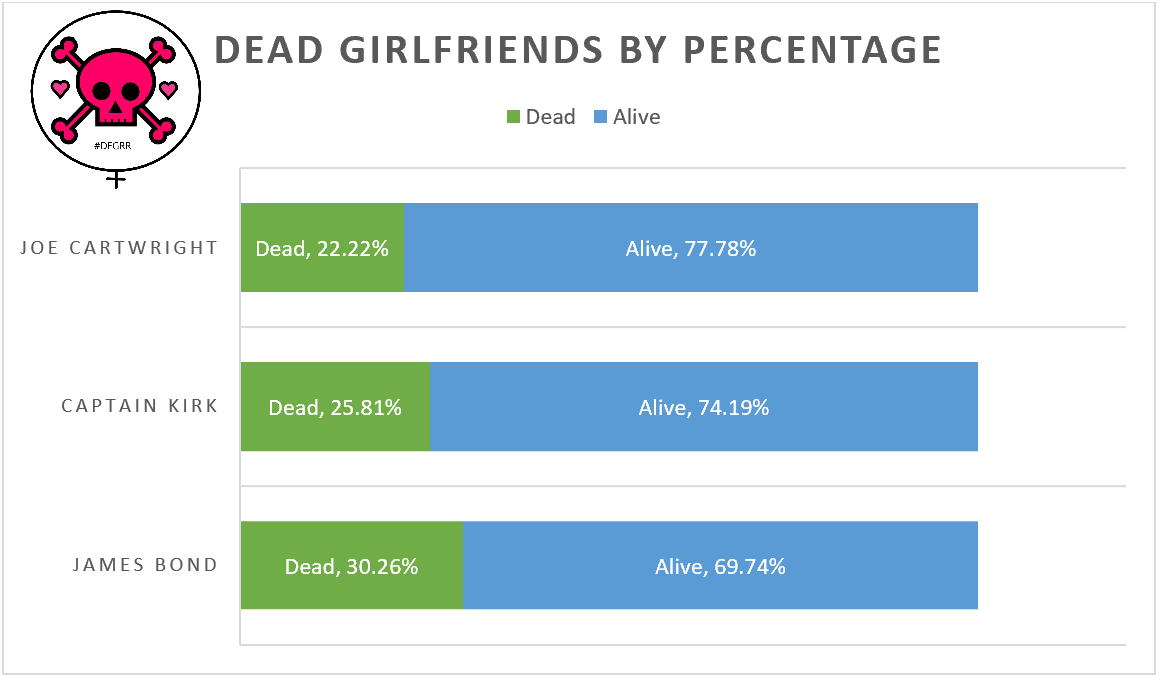
Still, when you consider that those 10 deaths represent 1 out of every 7 women recorded as living in the entire city, Joe Cartwright's total looks rather grim. It's one thing to rack up double-digit dead girlfriends if you're a Starfleet captain with a girl in every port, like Captain Kirk, or a British Commander with a girl in every port, like James Bond. It's quite another to witness that many tragic deaths when your travels are confined to "places a 19th-century Nevada rancher might plausibly take cattle" (which is to say, the Western half of the US + northern Mexico.)
Causes of Death & Culpability
The majority of the deaths were due to violence, as the following pie chart demonstrates:
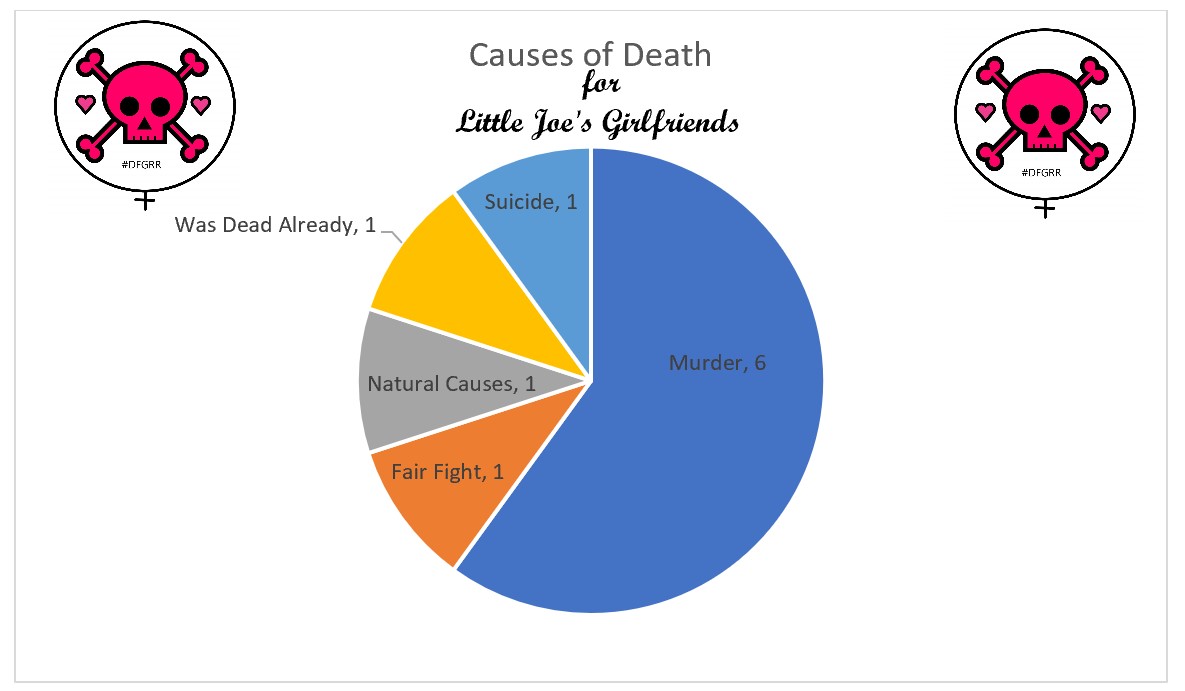
Wait, what do you mean "was dead already"?
Oh yeah - Joe Cartwright once dated a ghost. I am not making that up, and in fact the screenwriter anticipated that you might think I was. The episode ends with the 3 elder Cartwrights finding a dehydrated, concussed Joe wandering around a ghost town in confusion, and not believing his story about a mysterious woman who led him there. Ben sagely prevents an argument by saying:
Son, when a man knows something deep down in his heart. When he really knows, he doesn't have to argue about it. He doesn't have to prove it. Just knowing is enough. - "Twilight Town" (aired 10-13-1963)
Which is OK, as advice goes, except that in this case it's meant to encompass "knowing that you just kissed an actual restless spirit." Uh...sure, Ben.
Wow. OK. What about the "culpability" thing? How often is it Joe's fault that a woman dies?
Surprisingly, not that often. He has accidentally shot two separate women in hunting accidents, but they both survived their injuries. As for the deceased, we can't blame him for the preexisting terminal illness or the woman who was dead already, which leaves us with only the violent deaths to examine. They are as follows:
- Julia Bulette, "The Julia Bulette Story," stabbed by her ex-boyfriend;
- Amy Bishop, "The Truckee Strip", struck by a pitchfork someone threw at Joe;
- Ann, "Thunder Man", raped and murdered by a demolitions expert while on her way home from Joe's birthday party;
- Hallie Shannon, "The Trap," threw herself off a waterfall;
- Sally Bristol, "Justice," shot by a drunk man;
- Valerie Townsend, "False Witness," killed in a shootout with her fellow bank-robbers;
- Laura Pollard, "Star Crossed," killed by a man who's been blackmailing her after witnessing her kill a man in self-defense; and
- Alice Harper Cartwright, "Forever parts I & II", raped and killed by people to whom her brother owes money.
Phew. If nothing else, we're winning this BINGO.
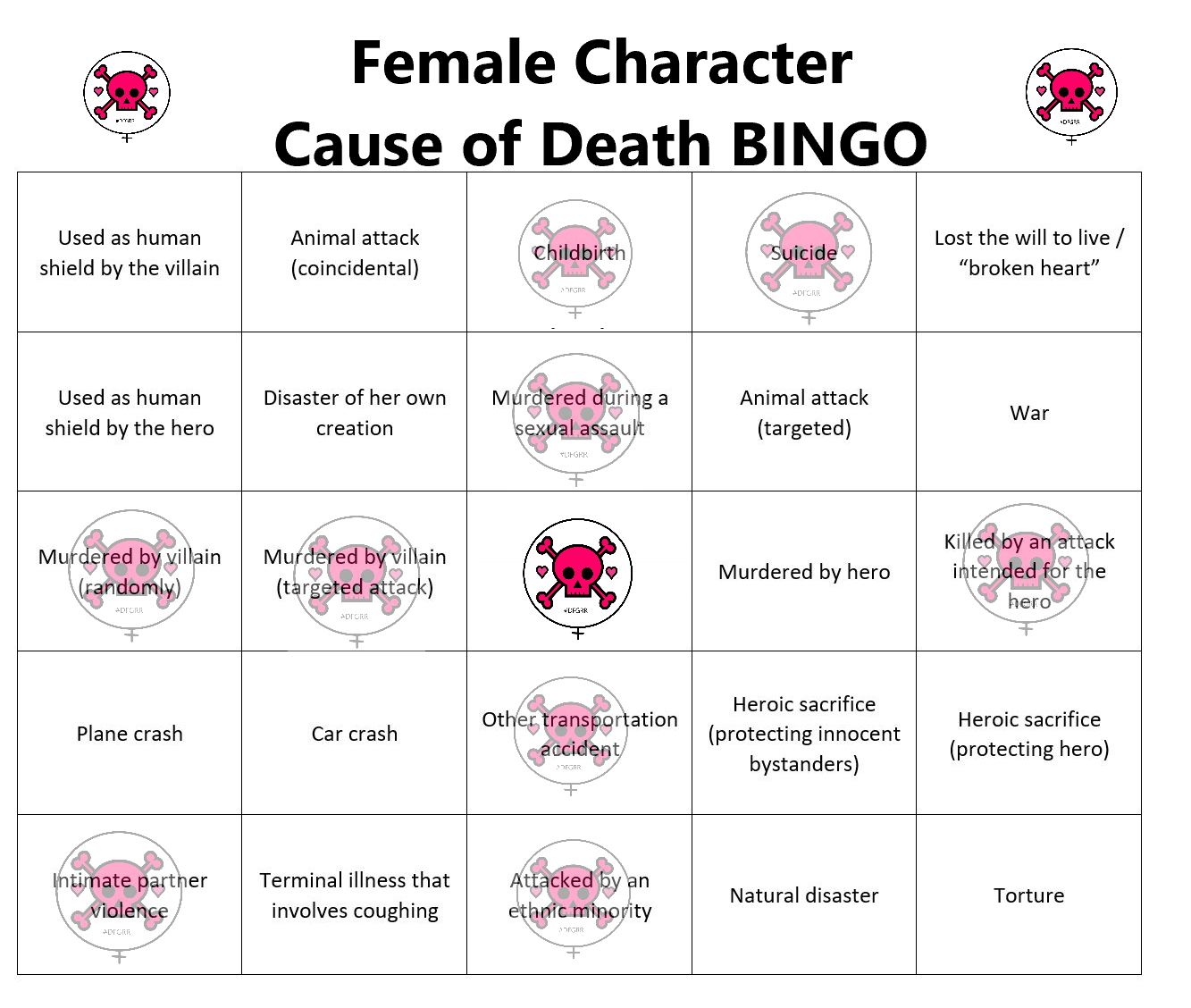
Joe is also winning: none of those deaths were really his fault. He's not the cause of any of the fatal arguments or the shootout, he doesn't use Amy Bishop as a human shield, and while he does get accused of killing Hallie Shannon, it's clear to the audience (if not to everyone in-universe) that she actually committed suicide. Joe Cartwright therefore has the title for Least Personally-Caused Deaths of Girlfriends.
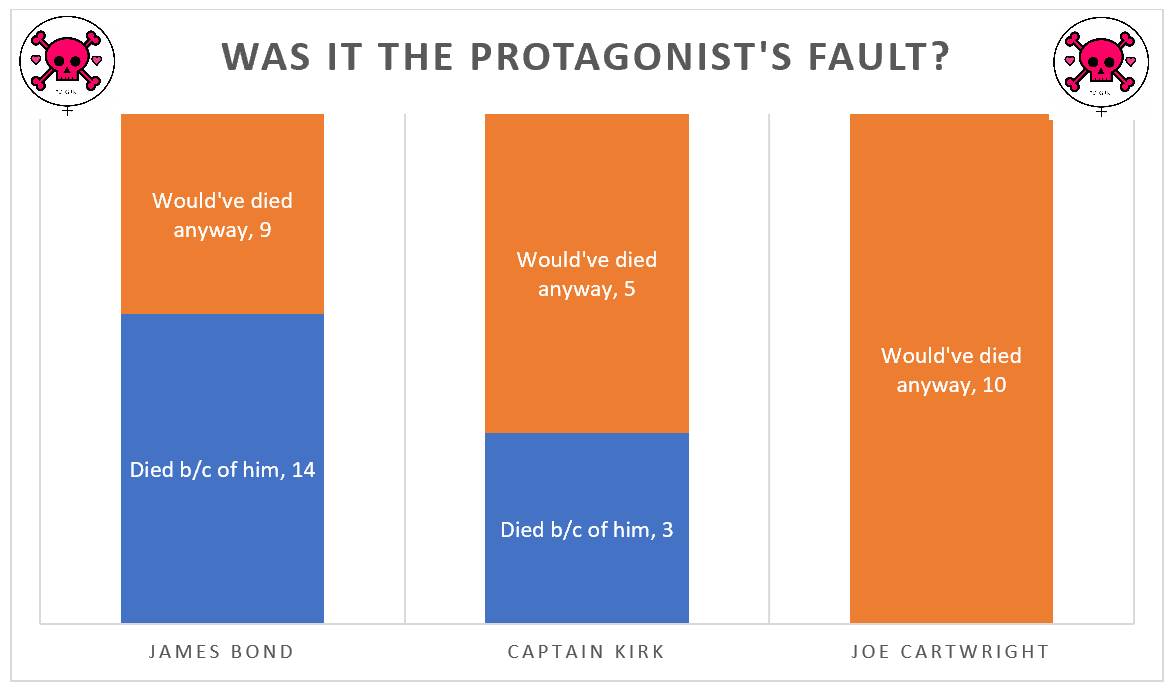
This goes a long way towards making Little Joe seem like a pro-woman hero. Sure, he spends multiple episodes per season trying to rescue damsels and/or rein in female misbehavior. Yes, he usually only cares about a woman's opinion when it coincides with his own. But at least he isn't going around killing his girlfriends!
If you think I'm setting the bar a bit low, please note that all of our other contestants have killed at least one of their partners.
By comparison, Joe practically qualifies as a feminist.
Pregnancy & Death
Unfortunately, Joe is not doing quite so well by our next metric. You see, on network TV in the 1960s, the protagonist of a Western couldn't have too many acknowledged sexual relationships. Bonanza worked around this by using many strategically-placed commercial breaks, and having Joe date women who were clearly supposed to be - though not referred to as - sex workers. Yet it was not until 1973's two-parter, "Forever," that Joe could have a verifiable sexual relationship with a woman.
The lady in question is Alice Harper Cartwright (Bonnie Bedelia), whom Joe meets when he rescues her gambling-addict brother from a bar fight. Since this puts her in the category of not having responsible male relatives to whom he can return her, Joe decides to ask Alice out. The two have a very 1870s courtship involving barn dances and walks in meadows, followed by a quick wedding. She announces that she's pregnant at the end of Part I. Sadly, in Part II, her useless brother ends up in debt to some very unsavory people, who realize she's just married into a very rich family...
So, while Joe is over at his father's house picking up timber to build the baby's nursery, Alice's brother's creditors break in. They search the house, and find one thing with real value: a music box that belonged to Marie, Joe's mother. Alice grabs it away from them. In retaliation, they shoot her brother, and menacingly chase her into the bedroom. By the time Joe gets back with his friend Candy and his younger brother Jamie, the entire house is in flames, and there's nothing they can do.
Joe & Candy hunt down the murderers, Bonanza gets canceled within 5 months, and Bonnie Bedelia goes on to become Holly McClane from Die Hard.
In which role, of course, she occasionally gets to punch a misogynist.
The death of Alice means that the mortality rate for regular-series pregnant partners is 100%.
But don't worry! The Bonanza sequel movie - which accomplished the rare feat of being a reunion movie that had no original cast members returning - features one Annabelle Cartwright, Joe's widow. She has 2 children, which means that at some point in the past, Joe had a pregnant wife, and she survived long enough to outlive him. This gives him a much-less-terrifying 50% pregnancy mortality rate.
Compared to Captain Kirk, Joe is in the lead for Highest Maternal Mortality Rate.
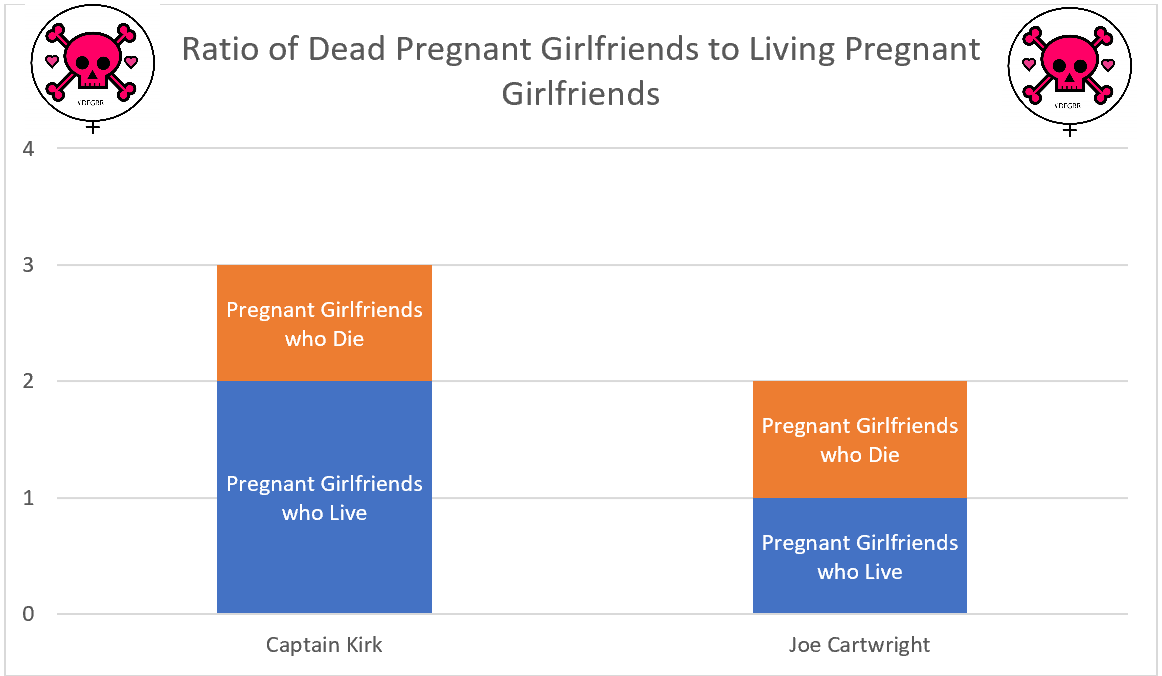
Uh...maybe you should worry a little bit.
Nefarious Intentions
Joe is also lucky enough to be our first contestant for whom None of his Girlfriends have Tried to Kill Him. That's not to say that his girlfriends don't have nefarious intentions, though. It's just that none of them ever stooped to attempted murder.
What kinds of nefarious intentions do they have?
14 out of his 45 girlfriends, or 31.11%, are up to something. As a representative sample, let me present:
- Maura Beth Terry ("The War comes to Washoe") is the daughter of a Confederate spy, who hopes to use their relationship to influence Ben into voting against Nevada's statehood, which would in turn damage Abraham Lincoln's chances of reelection.
- Tessa Caldwell ("Bullet for a Bride") is temporarily blinded when Joe shoots her in a hunting accident, which leads him to promise to financially support her. So, when she recovers from her injuries, she fakes that she's still blind to keep the money coming.
- Laurie Ferguson ("Something Broken, Something Wild") makes a false sexual-assault claim to get Joe in trouble. Don't worry about poor Joe's reputation, though - it turns out Laurie is simply delusional, not evil.
So you see, one-third of Joe's girlfriends (aka 1/6 of the women in Virginia City) are greedy and/or crazy. Watching these episodes back to back is like talking a film-studies course on how to write a femme fatale...an unsuccessful one. All of the nefarious plans must fail, after all, because otherwise people might start to think Joe isn't too bright.
I mean, I started to think that after the second or third time someone lied about being rich in the hopes of getting him to marry her. But I'm a jaded blogger.
How does Joe react to all these attempts to con him?
Most often, by having his girlfriend's male relatives correct the misbehaving lady. For instance, the resolution of "Something Broken, Something Wild" involves the Cartwrights realizing that Laurie is delusional, having become obsessed with the idea that men are predators because she blames her father for her mother's death. Joe exposes her insanity to her father (while she's holding Joe at gunpoint, no less.) This gets him to stop believing his daughter's claim about being sexually assaulted, since she's obviously crazy and Joe's obviously innocent. Then they send her upstairs to talk to a doctor, while the Ferguson & Cartwright men all sit down and drink a toast to their friendship. Based on the triumphant music playing during that scene, I'm guessing that in 1966 that seemed like a happy ending, not a horrifying example of men celebrating a successful silencing of a woman's inconvenient accusations.
Similarly, in "The War Comes to Washoe," Hoss and Adam dramatically race to the Nevada statehood convention with evidence that proves the Terry family are actually spies, not just Confederate sympathizers. As a result, Maura Beth's father agrees to take her back to the Confederate states and not cause any more trouble.
Alternatively, the woman herself might decide to shake off their relatives' manipulation and make amends. When Tessa's blindness trick fails, she apologizes for trying to trick Joe, and they part as friends.
You know I want to tell you something. You are the prettiest girl that I ever almost married. - Joe to Tessa Campbell, "Bullet for a Bride" (aired February 16, 1964)
The same thing happens on at least two of the other occasions when a woman tries to trick Joe into marrying her for his money. He's always remarkably willing to forgive and forget, no matter how many women try a similar scheme. The worst he ever does is joke to his brother about Meena Calhoun:
She doesn't want to marry somebody, she wants to marry anybody. Watch your step! - "Easy Come, Easy Go" (aired December 12, 1971)
These patterns - falling for sob stories, shrugging off devious schemes with a smile and a "don't do it again" - suggest that there are three categories of women in Bonanza's Virginia City: a) Those in Need of Protection, b) Those Doomed to Die, and c) Those Not Worth Taking Seriously.
Is it just me, or does that seem problematic?
No, it's not just you, and this is the heart of the issue with Bonanza's worldview. See, Bonanza takes a lot of risks. Its male cast members are constantly doing nuanced, thought-provoking things. Fleshing out a minor character is the show's favorite storytelling device, used to bring up an endless array of Important Issues. Yet only male characters get that treatment; the women are cardboard cutouts.
Some Bonanza apologists might argue, "it's a product of its time," or "it's an intentional period piece," with the corollary being "...and therefore its sexism is normal and excusable." But that argument falls apart once you look at the list of things that Bonanza considered to be acceptable breaks from reality.
| Can... | YES | NO |
| ...Jesus pop in for an Easter special? |  |
|
| ...Joe date more than the total number of young white women who lived in Virginia City? |  |
|
| ...there be [midgets pretending to be] leprechauns? |  |
|
| ...it be 1859 in season 6 when it was 1863 in season 2? |  |
|
| ...we appropriate plots from Les Miserables, Pygmalion, contemporary headlines, and the real lives of Julia Bulette, Mark Twain, Charles Dickens, Calamity Jane, and Albert A. Michelson? |  |
|
| ...women be taken seriously? |  |
This dichotomy means that Bonanza was a show about having adventures, trying to do the right thing, and working towards a better world...for men. While for women, it was a show about knowing your place: stand by your man, stand by your family, stop making trouble, and run along like a good girl.
Were it on the air today, Bonanza would be challenged and critiqued by bloggers and tweeters and women's groups left and right. Sadly, that was not an option in the 1960s. Instead, Bonanza was given an uncontested national platform to beam casual misogyny into millions of living rooms. At its ratings peak, this show was watched by 1 out of every 100 humans alive on the planet. It's hard to say exactly how it affected the audience's real-world attitudes about men and women, but I'm confident the answer is "not positively."
Wait, I thought you said Joe wasn't violent towards women?
He's not! In fact, he's the only one of our DFGRR contestants who has never struck a woman in anger. (*Editor's Note: Alert readers have pointed out that he does hit women occasionally, but always in self-defense.) Compare that to some of our other contestants' violent tempers, as seen in this compilation:
But when it comes to being a feminist ally, "not being physically abusive" is the bare minimum, isn't it? For all of his polite kindness towards women, the audience doesn't see Joe helping women in ways that preserve their dignity and self-determination, or respecting women's points of view, or validating their lived experiences. And the absence of those actions undercuts all the scenes where he does help a woman out of a bad situation.
For instance, let's look at the case of Wendy Dant ("Shining in Spain," aired 03-27-1966.) She's a character explicitly portrayed as looking much younger than she is. Joe doesn't believe her when she claims to be 19. Therefore, when her father fails to send her money to pay her hotel bill and a mysterious stranger offers her "help," it's pretty clear that the dude is meant to be a pedophile.
So of course, Joe beats that guy up and insists Wendy stay at the Ponderosa as his guest until they can locate her wayward father. And then, Joe and Wendy fall in love. But...she still can't pass for being 19! So our hero "rescued" her from someone who wanted an inappropriate sexual relationship, only to start an inappropriate romantic relationship. That isn't chivalry, it's Nice Guy syndrome.
In short, Joe knows how to treat a lady (at least by some standards), but he's a far cry from being truly pro-woman. And yet he was portrayed as a model of both morality and positive masculinity on a show that aired for fourteen freaking years.
Well, but it was a long time ago, right?
It sure can seem that way. After all, Bonanza stopped making new episodes when gas cost 39 cents and airlines were averaging 1 hijacking every 6 weeks. The finale aired 1 week before the Roe v. Wade decision legalized abortion in all 50 states. I freely concede that this was not a recent event.
But.
Imagine you are a 10-year-old boy who watches that finale. Bonanza, that defining show of your childhood, is still in reruns through your whole adolescence. It really sticks with you. Those Cartwright boys are so heroic! So when you grow up, and you want to make a Western, your vision is partially shaped by your old favorite. In fact, you decide to dress your hero in Joe Cartwright's costume as an homage.
Congratulations: you're Quentin Tarantino. You think Roman Polanski's sex crimes aren't that serious. You've been accused of being tough on actresses, to the point where one of them suffered permanent physical injuries. Oh, and you've known Harvey Weinstein was a rapist for more than 20 years, but continued to work with him up until his arrest. Whoops!
Now, multiply by all the other famous American boys who were the right age to watch this show during its original run. Mike Pence. Johnny Depp. Steve Jobs. Mel Gibson. Tom Cruise. Mike Tyson. I'll take "Men who have Problems with Women" for $2000, Alex!
Sure, Bonanza isn't the only source of casual misogyny that these people likely absorbed in their childhoods. (cough Star Trek cough James Bond cough.) And of course, not everybody born in that date range grew up to be a famous misogynist. Bruce Willis, for one, seems to be fine. Yet it's hardly a coincidence that a generation raised on sexist television produced so many sexist men; the stories we're told as children are a huge part of our moral development.
Bonanza told the stories of how men are always right about everything, and know what's best for everyone, and can solve any problem through the application of money and righteous violence (in 20-45 minutes' worth of screentime.) In doing so, it fueled a male-centered mindset that now permeates our world through technology, politics, entertainment, and more. No, it wasn't that long ago; in fact, it's never left us.
Conclusions
Connie: Well, you know very well I went to a girls' school.
Joe: Mhm. Only the way I heard it, there was a boys' school right down the block. How long is your list?
Connie: You'll die wondering, Little Joe.
- Sexual politics in "Denver McKee" (aired October 15, 1960)
Joe Cartwright stands at 3rd place in the Mortality Rate of Girlfriends, and is tied for 2nd place on Total Dead Girlfriends. He's in 1st for Mortality Rate of Pregnant Partners. He also receives honorable mention for Only Contestant who wouldn't Hit a Girl and Only Contestant who wouldn't Kill a Girl.
I've been harsh on Bonanza's legacy in this entry, so I want to close by saying: I don't hate it. While I am dedicated to this blog, I wouldn't have sat through this many hours of it just for your benefit. Much like Game of Thrones, it's an entertaining show that routinely screws over its female characters on both the textual and metatextual levels. The two descriptors coexist.
If you happen to catch a Bonanza rerun on TV, don't change the channel automatically. Give it a chance to make you laugh, or cry, or think. But if you find your thought is, "Gee, I want to roll my eyes" - honey, you're not alone.
